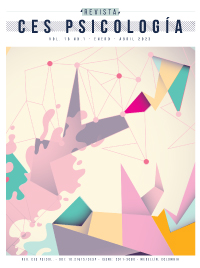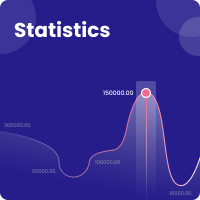Effect of facial expression on decision making
DOI:
https://doi.org/10.21615/cesp.6351Keywords:
financial advice, emotion, facial expression, health advice, decision-makingAbstract
Sometimes we advise others persons on the decisions they should make, and we accept risks that would be modulated by cognitive and emotional variables. In order to analyze the role of the expressed emotion in this type of interactions, it was conducted an experiment in which the type of emotion (facial expression: joy vs. sadness) and the type of advice (health vs. financial) were manipulated in order to analyze their impact on risk-taking and confidence in the response. The subjects accepted less risk when the facial expression was sadness (vs. happiness) in the financial situations. The findings are discussed as part of the reciprocity process in social interaction, where emotional information could play an important modulating role.
Downloads
References
Achaibou, A., Pourtois, G., Schwartz, S., & Vuilleumier, P. (2008). Simultaneous recording of EEG and facial muscle reactions during spontaneous emotional mimicry. Neuropsychologia 46, 1104–1113. https://doi.org/10.1016/j.neuropsychologia.2007.10.019
Adelmann, P. K., & Zajonc, R. B. (1989). Facial efference and the experience of emotion. Annual Review of Psychology, 40, 249-80. https://doi.org/10.1146/annurev.ps.40.020189.001341
Andersson, O., Holm, H. J., Tyran, J-R., & Wengström, E. (2014). Deciding for others reduces loss aversion. Management Science, 2461(13), 0–38. https://doi.org/10.1287/mnsc.2014.2085
Batteux, E., Ferguson, E., & Tunney, R. J. (2019a). Exploring how accountability affects the medical decisions we make for other people. Frontiers in Psychology, 10, 79. https://doi.org/10.3389/fpsyg.2019.00079
Batteux, E., Ferguson, E., & Tunney, R. J. (2019b). Do our risk preferences change when we make decisions for others? A meta-analysis of self-other differences in decisions involving risk. PLoS ONE 14(5), e0216566. https://doi.org/10.1371/journal.pone.0216566
Benjamin, A. M., & Robbins, S J. (2007). The role of framing effects in performance on the Balloon Analogue Risk Task (BART). Personality and Individual Differences, 43(2), 221-30. https://doi.org/10.1016/j.paid.2006.11.026
Boldt, A., Schiffer, A-M., Waszak, F., & Yeung, N. (2019). Confidence predictions affect performance confidence and neural preparation in perceptual decision making. Scientific Reports, 9, 4031. https://doi.org/10.1038/s41598-019-40681-9
Clore, G. L. (1992). Cognitive phenomenology: feelings and the construction of judgment. In The construction of social judgment, eds L. L. Martin and A. Tesser (Hillsdale, NJ: Erlbaum), 133–164.
Coles, N. A., Larsen, J. T., & Lench, H. C. (2019). A meta-analysis of the facial feedback literature: Effects of facial feedback on emotional experience are small and variable. Psychological Bulletin, 145(6), 610–651. https://doi.org/10.1037/bul0000194
Davis, J. I., Senghas, A., & Ochsner, K. N. (2009). How does facial feedback modulate emotional experience? Journal of Research in Personality, 43, 822-829. https://doi.org/10.1016/j.jrp.2009.06.005
Debove, S., Baumard, N., & André, J. P. (2016). Models of the evolution of fairness in the ultimatum game: a review and classification. Evolution and Human Behavior, 37, 245-254. https://doi.org/10.1016/j.evolhumbehav.2016.01.001
Drimalla, H., Landwehr, N., Hess, U., & Dziobek, I. (2019). From face to face: the contribution of facial mimicry to cognitive and emotional empathy. Cognition and Emotion, 33(8), 1672-1686. https://doi.org/10.1080/02699931.2019.1596068
Eriksen, K. W., & Kvaløy, O. (2010). Myopic investment management. Review of Finance, 14(3), 521-542. https://doi.org/10.1093/rof/rfp019
Eriksen, K. W., Kvaløy, O., & Luzuriaga, M. (2020). Risk-taking on behalf of others. Journal of Behavioral and Experimental Finance, 26. https://doi.org/10.1016/j.jbef.2020.100283
Fernandez-Duque, D., & Wifall T. (2007). Actor/observer asymmetry in risky decision making. Judgment and Decision Making, 2(1), 1–8. https://doi.org/10.1017/S193029750000022X
García-Retamero, R., & Galesic, M. Doc. (2012). Doc, what would you do if you were me? On Self-Other discrepancies in medical decision making. Journal of Experimental Psychology, 18(1), 38-51. https://doi.org/10.1037/a0026018
Hess, U., & Fischer, A. (2014). Emotional mimicry: why and when we mimic emotions. Social and Personality Psychology Compass, 8, 45-57. https://doi.org/10.1111/spc3.12083
Isen, A. M. (2001). An Influence of Positive Affect on Decision Making in Complex Situations: Theoretical Issues with Practical Implications. Journal of Consumer Psychology, 11(2), 75-85. https://doi.org/10.1207/S15327663JCP1102_01
Izard, C. E. (1990). Facial expressions and the regulation of emotions. Journal of Personality and Social Psychology, 58(3), 487-498. https://doi.org/10.1037//0022-3514.58.3.487
Kuckertz, J. M., & Amir, N. (2014). Attention bias modification for anxiety and phobias: current status and future directions. Current Psychiatry Reports 17(2), 545. https://doi.org/10.1007/s11920-014-0545-x
Likowski, K. U., Mühlberger, A., Gerdes, A. B., Wieser, M. J., Pauli, P., & Weyers, P. (2012). Facial mimicry and the mirror neuron system: simultaneous acquisition of facial electromyography and functional magnetic resonance imaging. Frontiers in Human Neuroscience. 6, 214. https://doi.org/10.3389/fnhum.2012.00214
Mori, K., & Mori, H. (2007). A test of the passive facial feedback hypothesis: We feel sorry because we cry. Perceptual and Motor Skills, 105, 1242–1244. https://doi.org/10.2466/PMS.105.7.1242-1244
Mori, K., & Mori, H. (2009). Another Test of the Passive Facial Feedback Hypothesis: When Your Face Smiles, You Feel Happy. Perceptual and Motor Skills, 109, 1–3. https://doi.org/10.2466/pms.109.1.76-78
Niedenthal, P. M., Brauer, M., Halberstadt, J. B., & Innes-Ker, Å. H. (2001). When did her smile drop? Facial mimicry and the influences of emotional state on the detection of change in emotional expression. Cognition & Emotion, 15(6), 853-864. https://doi.org/10.1080/02699930143000194
Phelps, E. A., Lempert K., M., & Sokol-Hessner, P. (2014). Emotion and decision making: multiple modulatory neural circuits. Annual Review of Neuroscience, 37, 263–288. https://doi.org/10.1146/annurev-neuro-071013-014119
Pollmann, M.M. H., Potters, J., & Trautmann, S. T. (2014). Risk taking by agents: The role of ex-ante and ex-post accountability. Economics Letters, 123(3), 387-390. http://dx.doi.org/10.1016/j.econlet.2014.04.004
Pronin, E., Olivola, C. Y., & Kennedy, K. (2008). Doing unto future selves as you would do unto others: Psychological distance and decision making. Personality and Social Psychology Bulletin, 34(2), 224–36. https://doi.org/10.1177/0146167207310023
Schwarz, N., & Clore, G. L. (1983). Mood, misattribution, and judgments of well-being: informative and directive functions of affective states. Journal of Personality and Social Psychology, 45, 513-523. https://doi.org/10.1037/0022-3514.45.3.513
Shaw, D., Czekóová, K., Gajdoš, M., Staněk, R., Špalek, J., & Brázdil, M. (2019). Social decision-making in the brain: Input-state-output modelling reveals patterns of effective connectivity underlying reciprocal choices. Human Brain Mapping, 40(2), 699-712. https://doi.org/10.1002/hbm.24446
Solomon, R. C. (1993). The Passions: Emotions and the meaning of life. Indianapolis, IN: Hackett. Tamarit, I., & Sánchez, A. (2016). Emotions and Strategic Behaviour: The Case of the Ultimatum Game. PLoS One, 11(7), e0158733. https://doi.org/10.1371/journal.pone.0158733
Stone, E. R, Yates, A. J., & Caruthers, A. S. (2002). Risk taking in decision making for others versus the self. Journal of Applied Social Psychology, 32(9), 1797-824. http://doi.wiley.com/10.1111/j.1559-1816.2002.tb00260.x
Tomkins, S. S. (1962). Affect, imagery, consciousness: Vol. 1. The positive affects. New York: Springer Tottenham, N., Tanaka, J. W., Leon, A. C., McCarry, T., Nurse, M., Hare, T. A., … Nelson, C. (2009). The NimStim set of facial expressions: Judgments from untrained research participants. Psychiatry Research, 168(3), 242–249. https://doi.org/10.1016/j.psychres.2008.05.006
Van Boven, L., McGraw, P., Kane, J., & Dale, J. (2010). Feeling close: Emotional intensity reduces perceived psychological distance. Journal of Personality and Social Psychology, 98, 872-885. https://doi.org/10.1037/a0019262
Vieider, F., Villegas-Palacio, C., Martinsson, P., & Majia, M. (2016). Risk taking for oneself and others: A structural model approach. Economic Inquiry, 54(2), 879-894. https://doi.org/10.1111/ecin.12290
Xiao, E., & Houser, D. (2005). Emotion expression in human punishment behavior. Proceedings of the National Academy of Sciences of the United States of America, 102(20), 20. https://doi.org/10.1073/pnas.0502399102
Yaniv, I. (2004). Receiving other people´s advice: Influence and benefit. Organizational Behavior and Human Decision Processes 93, 1-13. https://doi.org/10.1016/j.obhdp.2003.08.002
Ziegler, F. V., & Tunney, R. J. (2015). Who’s been framed? Framing effects are reduced in financial gambles made for others. BMC Psychology, 3(1), 9. https://doi.org/10.1186/s40359-015-0067-2
Zikmund-Fisher, B. J., Sarr, B., Fagerlin, A., & Ubel, P. (2006). A matter of perspective: Choosing for others differs from choosing for yourself in making treatment decisions. Journal of General Internal Medicine, 21(6), 618-22. https://doi.org/10.1111/j.1525-1497.2006.00410.x
Downloads
Published
How to Cite
Issue
Section
License
Copyright (c) 2023 Fernando Gordillo León, Lilia Mestas Hernández

This work is licensed under a Creative Commons Attribution-NonCommercial-ShareAlike 4.0 International License.
Each manuscript is accompanied by a statement specifyingThat the materials are unpublished, that have not been previously published in printed formatElectronic and that they will not be presented to any other means before knowing the decision of the magazine. ThroughoutIn case, any previous publication, sea in printed or electronic form, must be made known to the editorial staffWriting The authors attach a signed statement stating that, and the manuscript is acceptedFor publication, the rights of reproduction are the exclusive property of the Journal CES Psychology.| Article metrics | |
|---|---|
| Abstract views | |
| Galley vies | |
| PDF Views | |
| HTML views | |
| Other views | |




